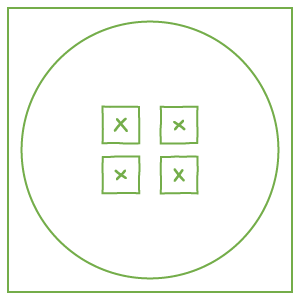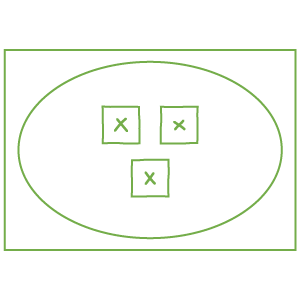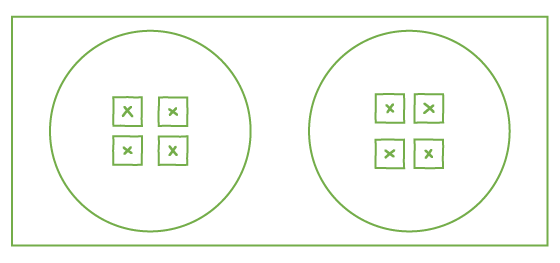Summer Pruning for Size Control
Families today have less space for fruit trees, less time to take care of them, and less time to process or preserve large crops than in the past. Accordingly, today’s family orchards should be planned and managed differently. The objective of BACKYARD ORCHARD CULTURE is the prolonged harvest of tree-ripe fruit from a small space. This means planting close together several or many fruit varieties which ripen at different times, and keeping the trees small by summer pruning.
BACKYARD ORCHARD CULTURE IS NOT COMMERCIAL ORCHARD CULTURE.
- For years, most of the information about growing fruit came from commercial orchard culture: methods that promoted maximum size for maximum yield but required 12-foot ladders for pruning, thinning and picking, and 400 to 600 square feet of land per tree. Tree spacings had to allow for tractors. Most people today do not need or expect commercial results from their backyard fruit trees. A commercial grower would never consider using his methods on a 90 ft. x 100 ft. parcel, so why should a homeowner?
BACKYARD ORCHARD CULTURE IS HIGH-DENSITY PLANTING AND SUCCESSIVE RIPENING
- Maximizing the length of the fruit season means planting several (or many) fruit varieties with different ripening times. Because of the limited space available to most homeowners, this means using one or more of the techniques for close-planting and training fruit trees; two, three or four trees in one hole, espalier, and hedgerow are the most common of these techniques. Four trees instead of one means ten to twelve weeks of fruit instead of only two or three.
- Close-planting offers the additional advantage of restricting a tree’s vigor – a tree won’t grow as big when there are competing trees close by. Close-planting works best when rootstocks of similar vigor are planted together. For example, for a four-in-one-hole planting, four trees on Citation rootstock would be easier to maintain than a combination of one tree on Lovell, one on Mazzard, one on Citation, and one on M-27.
- In many climates, planting more varieties can also mean better cross-pollination of pears, apples, plums and cherries, which means more consistent production.
BACKYARD ORCHARD CULTURE MEANS ACCEPTING THE RESPONSIBILITY FOR TREE SIZE
- Small trees yield crops of manageable size and are much easier to spray, thin, prune, net, and harvest than large trees. And, if trees are kept small, it is possible to plant a greater number of trees, affording the opportunity for more kinds of fruit and a longer fruit season.
- Most semi-dwarfing rootstocks do not control fruit tree size as much as people expect. Rootstocks are for soil and climate adaptation, pest and disease resistance, precocity (heavy bearing in early years), tree longevity, and ease of propagation. To date, no rootstocks have been developed which do all these things, plus fully dwarf the scion.
- The only way to keep most fruit trees under twelve feet tall is by PRUNING, and the most practical method of pruning is SUMMER PRUNING. In BACKYARD ORCHARD CULTURE, tree size is the grower’s responsibility. Choose a size and don’t let the tree get any bigger. A good height is the height you can reach for thinning and picking while standing on the ground, or while standing on a low stool.
- Two other important influences on tree size are irrigation and fertilization practices. Fruit trees should not be grown with lots of nitrogen and lots of water. Some people grow their fruit trees the way they do their lawn, then wonder why the trees are so big and don’t have any fruit!
BACKYARD ORCHARD CULTURE MEANS UNDERSTANDING THE REASONS FOR PRUNING
- Most kinds of deciduous fruit trees require pruning to stimulate new fruiting wood, to remove broken and diseased wood, to space the fruiting wood, and to allow good air circulation and sunlight penetration in the canopy.
- Pruning is most important in the first three years, because this is when the shape and size of a fruit tree is established. It’s much easier to keep a small tree small than it is to make a large tree small.
- Pruning at the same time as thinning the crop is strongly recommended. By pruning when there is fruit on the tree, the kind of wood on which the tree sets fruit (one year-old wood, two year-old wood, spurs, etc.) is apparent, which helps you to make better pruning decisions.
BACKYARD ORCHARD CULTURE MEANS SUMMER PRUNING FOR SIZE CONTROL
- There are several reasons why summer pruning is the easiest way to keep fruit trees small. Reducing the canopy by pruning in summer reduces photosynthesis (food manufacture), thereby reducing the capacity for new growth. Summer pruning also reduces the total amount of food materials and energy available to be stored in the root system in late summer and fall. This controls vigor the following spring, since spring growth is supported primarily by stored foods and energy. And, obviously, pruning is easier (and more likely to get done) in nice weather than in winter.
BACKYARD ORCHARD CULTURE MEANS NOT BEING INTIMIDATED BY PLANTING OR PRUNING
Fruit tree planting and pruning needn’t be complicated or confusing. When planting, be aware of air circulation. This is important in cutting down disease problems. Check drainage. If poor draining soils are suspected, consider a raised bed to protect the trees from starving for oxygen in heavy soils. Up to 4 trees can be planted in a 4×4 foot bed raised up at least 12 inches. Larger beds can accommodate more trees.
SELECTING STOCK
Getting started means selecting stock from the local nursery. When possible smaller caliper trees are preferred, ⅝ inch caliper and smaller respond best to the initial cutting back. When selecting trees that are ¾ inch caliber or larger it is best to look for trees with limbs established between 15 and 18 inches from the ground and cut them back by ½ to ⅔. If selection is limited to trees with limbs starting higher than 18 inches, consider delaying any size control pruning until after the spring flush. Follow First year, “after spring flush” directions.
When selecting trees that have been established in the container for over a year it is best to choose trees that have the lowest established limbs. For planting, in late spring or summer, allow the tree to get established and wait until winter to cut back. For winter planting of year old container trees, cut back the tree ½ to ⅔ or follow the instructions for 1st year containerized trees.
Pruning BACKYARD ORCHARD CULTURE is simple. When planting a bareroot tree, cut side limbs back by at least two-thirds to promote vigorous new growth. Then, two or three times per year, cut back or remove limbs and branches to accomplish the following:
First year
- At planting time, bareroot trees may be topped as low as 15″ up from the ground to force very low scaffold limbs or trees may be topped higher than 15″ (up to four feet) depending on the presence of well spaced existing side limbs or desired tree form. After the spring flush of growth cut the new growth back by half (late April/early May in Central Calif.). In late summer (late August to mid-September) cut the subsequent growth back by half. Size control and development of low fruiting wood begins now.
- When selecting containerized trees for planting in late spring/early summer, select trees with well-placed low scaffold limbs. These are usually trees that were cut back at planting time to force low growth. Cut back new growth by half now, and again in late summer.
- Two/three/four trees in one hole -At planting time, plant each tree 18″ to 24″ apart. Cut back all trees to the same height. Cut back new growth by half in spring and late summer as above. In the first two years especially, cut back vigorous varieties as often as necessary. Do not allow any variety to dominate and shade out the others. Plant each grouping of 3 or 4 trees in one hole at least 12′ to 15′ feet apart to allow for adequate light penetration and good air circulation.
- Hedgerow plantings – Easiest to maintain when spaced at least 3 or more feet apart. Make sure that the placement of the hedgerow does not block air circulation and light from other plantings.
To conserve water, it is recommended to apply at least a 4-inch layer of mulch to 4 feet from the tree for single trees or from the center of the planting for 2, 3, or 4 trees in one hole.
Second year
- Pruning is the same as the first year; cut back new growth by half in spring and late summer. For some vigorous varieties, pruning three times may be the easiest way to manage the tree: spring, early summer and late summer. Thin to an open center beginning in the second season. Prune singletree plantings to vase shape. Multi plantings thin out the center to allow plenty of sunlight into the interior of the group of trees. Remove broken limbs. Remove diseased limbs well below signs of disease.
Third year
- Choose a height and don’t let the tree get any taller. Tree height is the decision of the pruner. When there are vigorous shoots above the chosen height, cut back or remove them. Again, in late spring/early summer, cut back all new growth by at least half.
- The smaller one, two, and three-year old branches that bear the fruit should have at least six inches of free space all around. This means that where two branches begin close together and grow in the same direction, one should be removed. When limbs cross one another, one or both should be cut back or removed.
- When removing large limbs, first saw part way through the limb on the under side ahead of your intended cut. Do this so it won’t tear the trunk as it comes off. Also, don’t make the final cut flush with the trunk or parent limb – be sure to leave a collar (a short stub).
- Apricots will require more pruning in the summer to control height. Prune as needed (2 to 3 times in the summer) to keep the tree from getting too much growth. Be careful not to cut too much at one time, this will cause excess sun exposure of unprotected limbs, which can cause sunburn to the interior limbs.
- To develop an espalier, fan, or other two-dimensional form, simply remove everything that doesn’t grow flat. Selectively thin and train what’s left to space the fruiting wood.
- Don’t let the pruning decisions inhibit you or slow you down. There are always multiple acceptable decisions – no two people would prune a tree exactly the same. You learn to prune by pruning!
For further advice consult your nursery professional.
BACKYARD ORCHARD CULTURE BEGINS WITH SUMMER PRUNING!
- Smaller trees are easier to spray, prune, thin, net, and harvest! And, with small trees, it’s possible to have more varieties that ripen at different times. The easiest way to keep trees small is by summer pruning. There are lots of styles, methods, and techniques of summer pruning; most of them are valid. The important thing is to prune!
BACKYARD ORCHARD CULTURE MEANS KNOWING YOUR NURSERY PROFESSIONAL
- The concepts and techniques of BACKYARD ORCHARD CULTURE are learned and implemented year by year. An integral part of BACKYARD ORCHARD CULTURE is knowing your nursery professionals and consulting them when you have questions.
BACKYARD ORCHARD CULTURE MEANS THE PRIDE OF ACCOMPLISHMENT
- There is a definite sense of accomplishment and satisfaction, a special pleasure in growing your own fruit, in growing new varieties of fruit, in producing fruit that is unusually sweet and tasty, in having fruit over a long season, and in sharing tree-ripe fruit with others. These are the rewards of learning and experimenting with new cultural practices and techniques, the rewards of becoming an accomplished backyard fruit grower.
ULTIMUS DICTUM
There’s no excuse for neglected trees, maintenance undone, or lack of know-how. BACKYARD ORCHARD CULTURE is an attitude: “just do it!”
Examples of High-Density Planting

1 O’ x 1 O’ Area.
Four trees in one hole, 15″ apart.

9′ x 1 0′ Area.
Three trees in one hole, 15″ apart.

8′ x 9′ Area.
Two trees in one hole, 15″ apart.

1 O’ x 20′ Area.
Two sets of four trees in one hole. In each set, trees 15″ apart.

15′ x 20′ Area.
Two sets of four trees in one hole, plus two espaliered trees.

1 0′ x 36′ Area.
12 trees in a hedgerow, 36″ apart (or plant three sets of four trees in one hole).

15′ x 36′ Area.
12 trees in a hedgerow, 36″ apart, plus three espaliered trees.

10′ x 15′ informal.
Six trees in one hole. Use your imagination!
